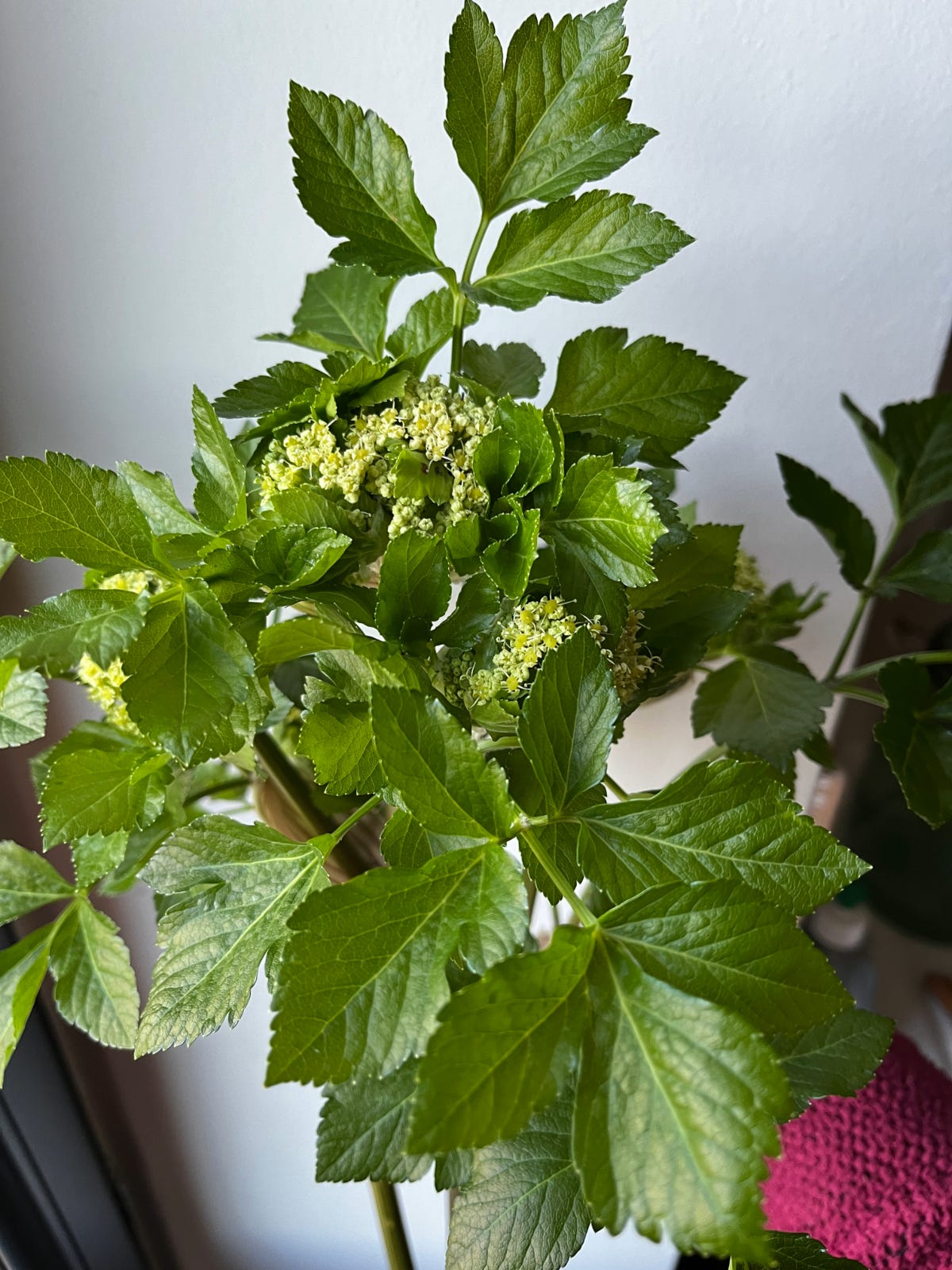Alexanders and Orange salad
A simple recipe to showcase a once-popular plant that remains a forager's favourite.
Last week, I was excited to read up on what’s going to be around in March in my foraging calendar. When I saw the image of Alexanders on the first page, I immediately thought of a few places I had come across them in recent years, without knowing what they were or that they were edible: a bridle path where I used to walk my dog in Kent. The coastal path around the corner from my parents’ house in Devon. Finally, at the end of my road, here in France.
It’s believed that the Romans brought Alexanders (Also known as Alisanders or Parsley of Alexandria) to Britain from the Mediterranean as a potted herb. They also used Alexanders as fodder for livestock during the winter months and this might explain where another common name, Horse Parsley, came from. In Greece, it’s known as Agrioselino (wild celery) and in Italy, Macerone or Maceronous corinol because it grows on wasteland.
Alexanders were widely used right up to the 18th century, but with the growing popularity of celery and its milder flavour, they were somewhat relegated to the hedgerows which is where we commonly find them today, as well as in wasteland, woodland, country lanes and coastal paths.
The stem, leaves, flowers and seeds are all edible, as is the root. Alexanders can be used as a herb or as a vegetable and are incredibly versatile. Steamed, candied, sautéed, pickled, eaten raw, used to make syrups and cordials, in salads, soups and stews…. I could go on. You either like the flavour - which is often compared to celery, fennel and the leaves described as a ‘peppery parsley’ - or you don’t.
As far as I’m aware, you shouldn’t be worried about over-foraging Alexanders but bear in mind that it’s one of the first plants to flower (as early as late February) and attracts a large number of pollinating insects, so leave the flowers if you can.
Alexanders are a member of the Apiaceae family, of which there are many other deliciously edible members as well as some very deadly ones. Alexanders are often confused with Hemlock Water Dropwort, which is considered to be one of the most poisonous plants in the British Isles. There are some obvious differences once you know what to look for. Alexanders have a purple-ish striped stem and Hemlock is spotted red. The leaves of Alexanders are a bright, almost yellow-ish green and Hemlock leaves are a much darker green. There are other differences too and you’ll be able to find comparisons on trusted pages online or in foraging books. I’m not exactly a seasoned forager, so I spent a long time checking and double-checking this plant before I started to prep the recipe. A Socrates-style death? Not today.
I adapted a simple orange and fennel salad, replacing the latter with Alexanders stem, and topped with some walnuts. I made a really simple dressing using lemon juice and olive oil, a little salt and a generous amount of black pepper. I picked these walnuts from a tree behind my garden at the end of the summer. Yes, I feel a bit smug about that but I’ll admit that only four out of twenty-odd made it into this salad. The rest were rotten. C'est la vie.
Ingredients
Alexanders (the stalk, approx. 6 inches long and rinsed well)
3 oranges, peeled and sliced/segmented
Lemon juice
Olive oil
Handful of walnuts
Salt and pepper
Method
One by one, top and tail your oranges with a sharp knife and remove the peel and pith, one strip at a time. You can now either slice the oranges or segment them.
With a peeler, remove the tough, stringy exterior of the Alexanders. Cut the stem in half, lengthways, to expose the pale flesh inside. Next, thinly slice the Alexanders. The stem is hollow. You’ll have crescent-like slices, very much like celery.
In a mixing bowl, add three tablespoons of olive oil and a squeeze of lemon. Use the 3:1 ratio (three parts oil, one part acidity). Add salt and pepper, whisk together and adjust if necessary to taste. Add the sliced Alexanders and mix well.
Assemble the oranges on your plate and then scatter the Alexanders plus some of the dressing on top. Scatter some chopped walnuts to finish. You could use a few of the leaves to add a ‘pop’ of colour or some of the flowers as well as a peppery-ness.
This plate would be a great starter salad or side dish to accompany fish, chicken or even duck.
Thanks for reading Comté Dinner. My content is public and free, so please share it with anyone you think may enjoy it!
Click the like button to let me know that you found the content interesting, leave me a comment or use the new DM feature on Substack to get in touch with me.




